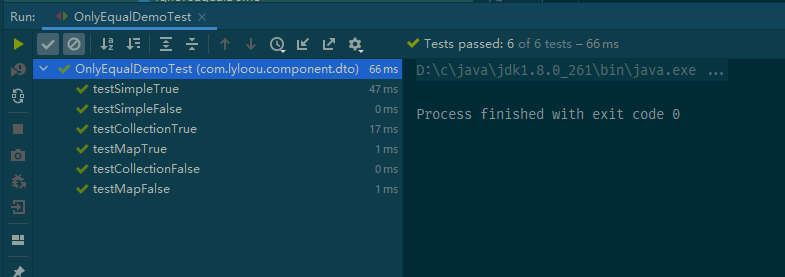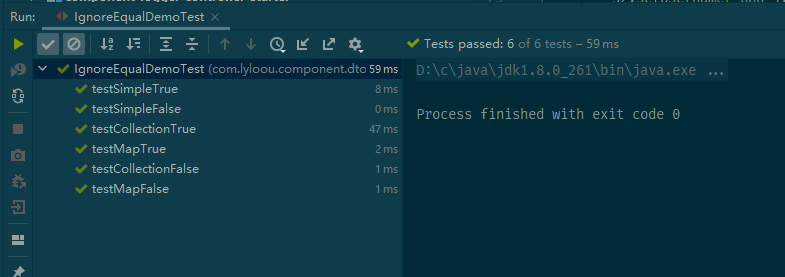1
2
3
4
5
6
7
8
9
10
11
12
13
14
15
16
17
18
19
20
21
22
23
24
25
26
27
28
29
30
31
32
33
34
35
36
37
38
39
40
41
42
43
44
45
46
47
48
49
50
51
52
53
54
55
56
57
58
59
60
61
62
63
64
65
66
67
68
69
70
71
72
73
74
75
76
77
78
79
80
81
82
83
84
85
86
87
88
89
90
91
92
93
94
95
96
97
98
99
100
101
102
103
104
105
106
107
108
109
110
111
112
113
114
115
116
117
118
119
120
121
122
123
124
125
126
127
128
129
130
131
132
133
134
135
136
137
138
139
140
141
142
143
144
145
146
147
148
149
150
151
152
153
154
155
156
157
158
159
160
161
162
163
164
165
166
167
168
169
170
171
172
173
174
175
176
177
178
179
180
181
182
183
184
185
186
187
188
189
190
191
192
193
194
195
196
197
198
199
200
201
202
203
204
205
206
207
208
209
210
211
212
213
214
215
216
217
218
219
220
|
import lombok.SneakyThrows;
import java.beans.PropertyDescriptor;
import java.io.Serializable;
import java.lang.reflect.Field;
import java.lang.reflect.Method;
import java.util.*;
import java.util.function.BiFunction;
import java.util.stream.Collectors;
public interface Equable extends Serializable {
long serialVersionUID = 1L;
default boolean onlyEqualsTo(Equable other) {
final List<EqualGetter<Equable>> getterList = listOnlyEqualsToGetter();
if (getterList == null || getterList.isEmpty()) {
return Objects.equals(other, this);
}
for (EqualGetter<Equable> equalGetter : getterList) {
Object o1 = equalGetter.apply(this);
Object o2 = equalGetter.apply(other);
if (o1 instanceof Equable && o2 instanceof Equable) return ((Equable) o1).onlyEqualsTo((Equable) o2);
if (o1 instanceof Collection && o2 instanceof Collection) {
if (notEqualsCollection((Collection<?>) o1, (Collection<?>) o2, Equable::onlyEqualsTo)) return false;
continue;
}
if (o1 instanceof Map && o2 instanceof Map) {
if (notEqualsMap((Map<?, ?>) o1, (Map<?, ?>) o2, Equable::onlyEqualsTo)) return false;
continue;
}
if (!Objects.equals(o1, o2)) {
return false;
}
}
return true;
}
default boolean notEqualsMap(Map<?, ?> o1, Map<?, ?> o2, BiFunction<Equable, Equable, Boolean> biFunc) {
final Collection<?> set1 = o1.keySet();
final Collection<?> set2 = o2.keySet();
if (notEqualsCollection(set1, set2, biFunc)) return true;
final Collection<?> values1 = o1.values();
final Collection<?> values2 = o2.values();
return notEqualsCollection(values1, values2, biFunc);
}
default boolean notEqualsCollection(Collection<?> o1, Collection<?> o2, BiFunction<Equable, Equable, Boolean> biFunc) {
if (Objects.isNull(o1) && Objects.isNull(o2)) {
return false;
}
if (Objects.isNull(o1) || Objects.isNull(o2)) {
return true;
}
if (o1.isEmpty() && o2.isEmpty()) {
return false;
}
if (o1.size() != o2.size()) {
return true;
}
o1 = o1.stream().sorted(Comparator.comparingInt(Object::hashCode)).collect(Collectors.toList());
o2 = o2.stream().sorted(Comparator.comparingInt(Object::hashCode)).collect(Collectors.toList());
final Iterator<?> iterator1 = o1.iterator();
final Iterator<?> iterator2 = o2.iterator();
while (iterator1.hasNext() && iterator2.hasNext()) {
final Object next1 = iterator1.next();
final Object next2 = iterator2.next();
if (next1 instanceof Equable && next2 instanceof Equable) {
if (!biFunc.apply((Equable) next1, (Equable) next2)) {
return true;
}
} else {
return !Objects.equals(next1, next2);
}
}
return false;
}
default <T extends Equable> List<EqualGetter<T>> listOnlyEqualsToGetter() {
return Collections.emptyList();
}
@FunctionalInterface
interface EqualGetter<T extends Equable> extends Serializable {
Object apply(T source);
}
@SneakyThrows
default boolean ignoreEqualsTo(Equable other) {
if (Objects.equals(this, other)) {
return true;
}
final Class<? extends Equable> aClass1 = this.getClass();
final Class<? extends Equable> aClass2 = other.getClass();
if (!Objects.equals(aClass1, aClass2)) {
return false;
}
final Field[] declaredFields = aClass1.getDeclaredFields();
for (Field declaredField : declaredFields) {
final EqualIgnored isIgnored = declaredField.getAnnotation(EqualIgnored.class);
if (Objects.nonNull(isIgnored)) {
continue;
}
final PropertyDescriptor propertyDescriptor = new PropertyDescriptor(declaredField.getName(), aClass1);
final Method readMethod = propertyDescriptor.getReadMethod();
final Object o1 = readMethod.invoke(this);
final Object o2 = readMethod.invoke(other);
if (o1 instanceof Equable && o2 instanceof Equable) return ((Equable) o1).ignoreEqualsTo((Equable) o2);
if (o1 instanceof Collection && o2 instanceof Collection) {
if (notEqualsCollection((Collection<?>) o1, (Collection<?>) o2, Equable::ignoreEqualsTo)) return false;
continue;
}
if (o1 instanceof Map && o2 instanceof Map) {
if (notEqualsMap((Map<?, ?>) o1, (Map<?, ?>) o2, Equable::ignoreEqualsTo)) return false;
continue;
}
if (!Objects.equals(o1, o2)) {
return false;
}
}
return true;
}
}
@Target({ElementType.FIELD})
@Retention(RetentionPolicy.RUNTIME)
@Documented
public @interface EqualIgnored {
}
|

